A robe can be many things. Sure, it’s a garment, but it can also be cover, a disguise, a costume or a uniform. It’s also something composed of many different threads woven together to create something much bigger. It’s these kinds of layers of multiplicity which form the basis of the inspiration for Scottish composer Alastair White’s new opera, ROBE, premiering at this year’s Tête à Tête opera festival. Scored only for piano, flute and four female voices, the opera creates a layered matrix of worlds within worlds, exploring complex networks between stories, history and experiences.
White’s route to composition is far from conventional. After completing a degree in English Literature at the University of Edinburgh, he moved to London ‘on a whim’ with his alt-rock band White Heath. Though he had ‘no notational skills at all’, he taught himself the basics of harmony and notation from books in the Barbican library, plus a couple of websites, in between his shifts in a call centre. He then embarked on a master’s in composition in 2016 at Goldsmiths University, where he is currently studying for a PhD.
The main ‘character’ in the opera is the superintelligence EDINBURGH, whose desire is to become a living city. It’s a role sung by two singers at once. Soprano Sarah Parkin and mezzo-soprano Rosie Middleton (pictured below) work together with inter-weaving vocal melodies to bring to life this complex character. Though named after the place where White studied for his undergraduate degree, the role could represent any city in the world, where countless individuals, each with their own unique experiences and narratives, come together in a jostling melee.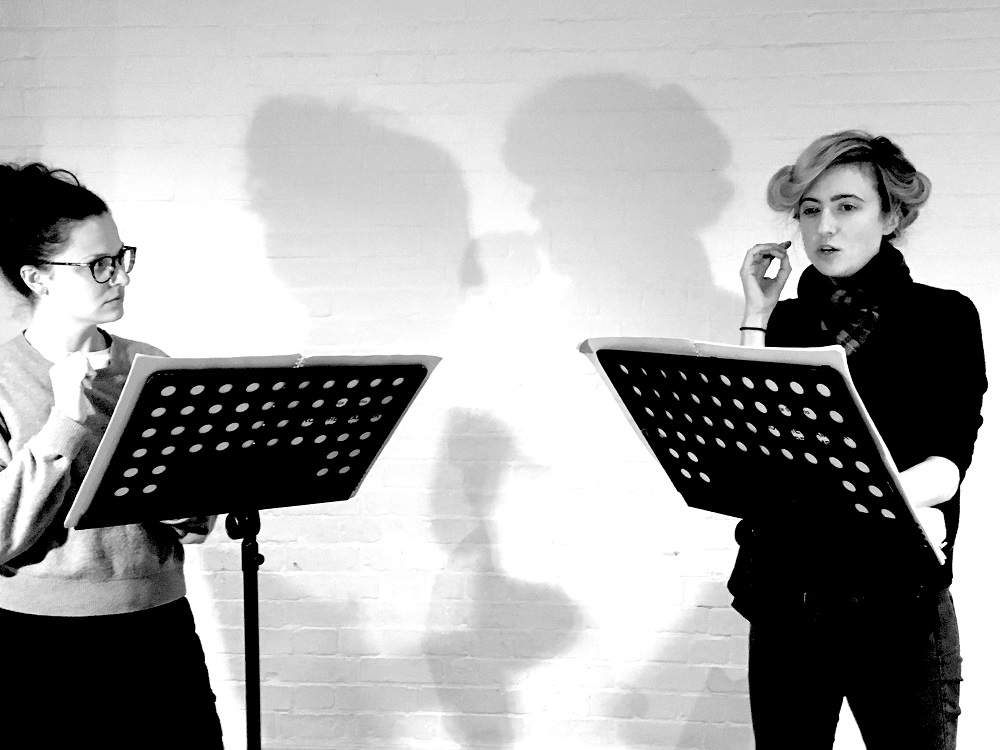 MIRANDA HEGGIE: What was the inspiration behind the story for this opera?
MIRANDA HEGGIE: What was the inspiration behind the story for this opera?
ALASTAIR WHITE: ROBE is meant to be about the real experience of living in a city today. That’s something you can’t sum up in a single story. It’s about the collision of multiple perspectives, multiple stories coming together and being contained in a single structure. In our post-truth society, when there’s no such thing as a stable reality, or a stable temporality, how do you reclaim your own agency? ROBE expands on this idea. It looks at the meaning within community. Not just within yourself but society, when we’re living in this kind of piecemeal world that’s composed of your own experience and then public official history, such as the news. On top of that, virtual reality, internet, fiction, movies and books combine to create a disorientating multiplicity of contrasting stimuli. The piece seeks to work out how you reorganise all that to give yourself meaning. It’s also about how you use history to create contemporary reality.
It seems like there are many complex layers to the piece. how are these translated into the music?
The compositional language is based around large twelve-note chords, which repeat their intervals after the tritone in the centre. All those rows contain two triads which form a polychord. From that single structure, you can create three additional structures, which in turn create their own wealth of material and work by forming each other’s recontextualization within the piece. So, from that there are not just different characters, but different worlds within the opera.
And how are operas’ characters represented in the score?
The way the music reflects the characters has more to do with the characters’ experiences than their personal attributes People exist at any moment in this flux of stimuli and sensations. These are much more important than any inherent qualities. So, the music exists much more on the point of the moment rather than the baggage the characters bring with them. It’s situational as opposed to inherent – the libretto and the music are much more interested in what the characters are feeling and experiencing in a single moment than the overarching narrative of the piece. 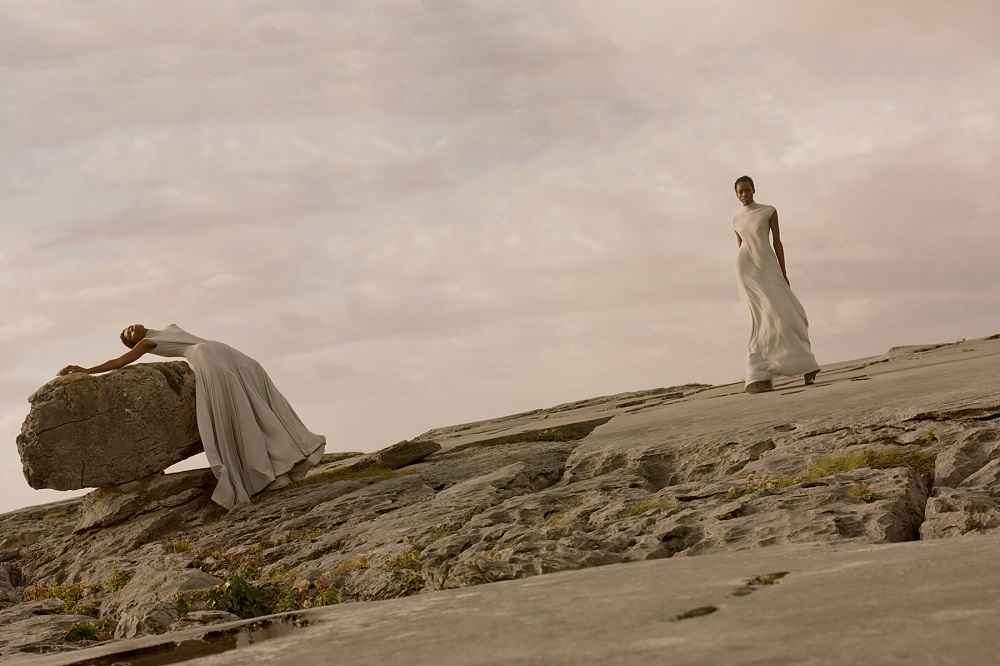 How have you found the experience of creating such a detailed soundscape with an ensemble of only two?
How have you found the experience of creating such a detailed soundscape with an ensemble of only two?
Ben Smith is the pianist and music director, and he’s an incredible, incredible musicians. He can do things that you wouldn’t think were possible on the piano! Jenni’s also from that complexity tradition, and they both push the limits of their instrument. Jenni uses movement a lot in how she plays the flute to change the sound. The incredible things that these players can do has been a huge factor in creating these multiple layers of reality. Doing that kind of world-building with only two instrumentalists wouldn’t be possible without collaboration with musicians like Ben and flautist Jenni Hogan.
Your journey to classical composition has been fairly unusual, hasn’t it?
I first learned about music through rock and roll. I played piano in White Heath for about ten years, but it was only when I moved down to London, I discovered what you could do with larger musical canvasses; the things that you could say and the worlds that you could create. I became really excited by composition. When you’re creating rock and roll, you’re creating a sound, or perhaps even more of a feeling. Learning about notation was so much fun! It was like an entire new world was opening up. You’re creating a document that then creates a performance – the tension there is fascinating.
With opera, there’s not one perspective to understand it from. Everybody comes together to experience it, and for me, that’s where meaning happens. It exists in between the people in the seats and in between the people in the production, and somewhere above that, whatever that ephemeral, intangible thing that is called "community". That’s where we’re trying to create meaning.

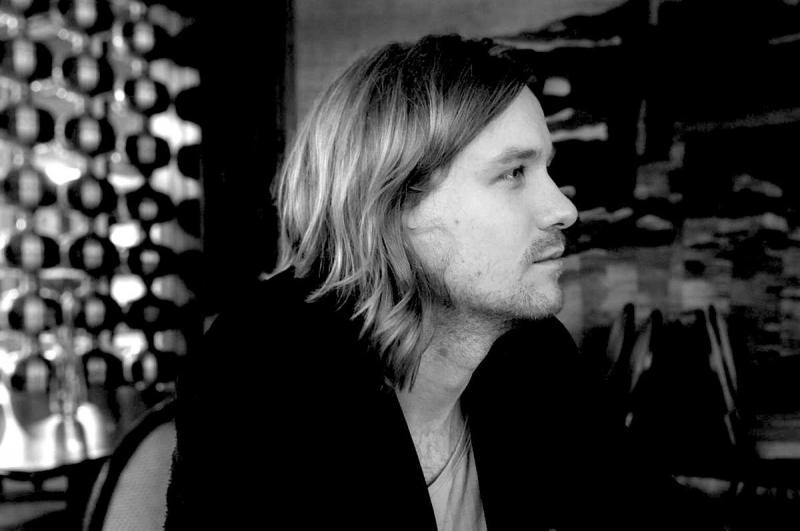

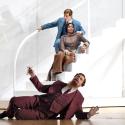
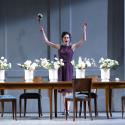










Add comment